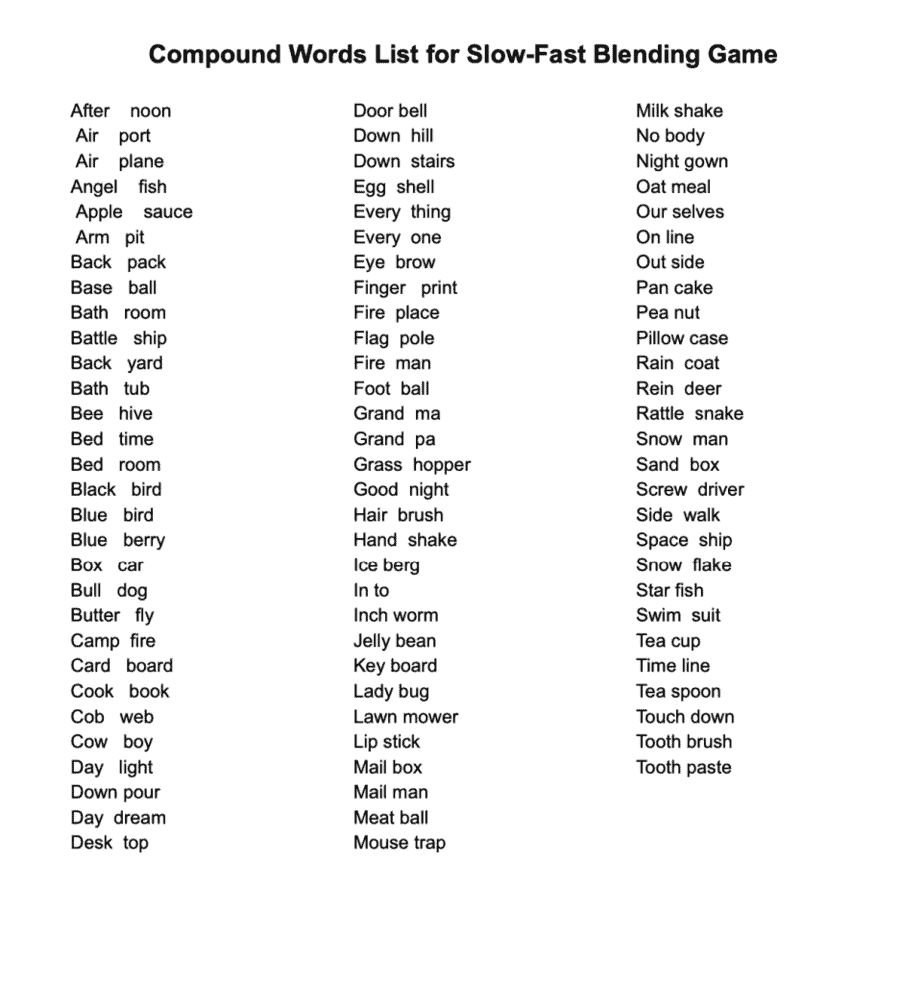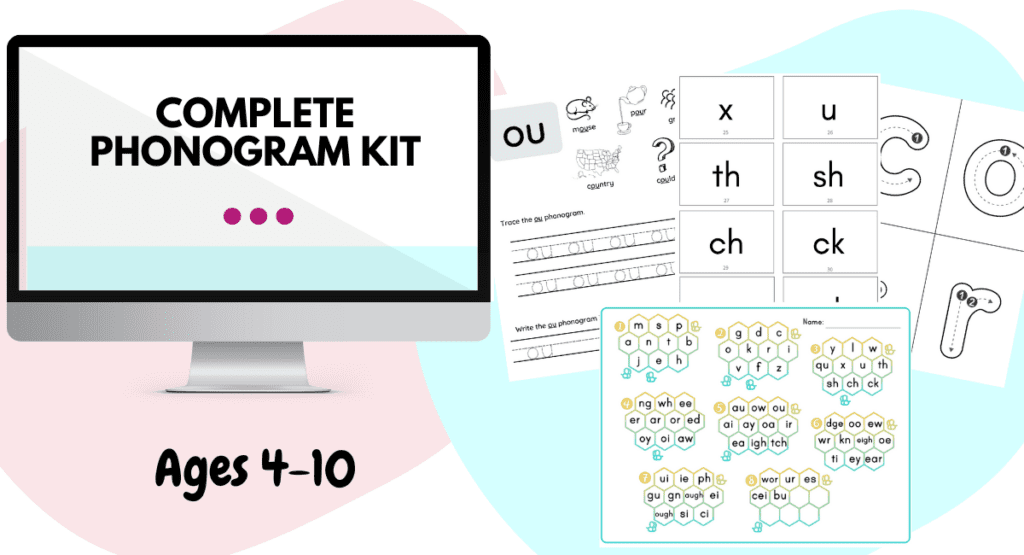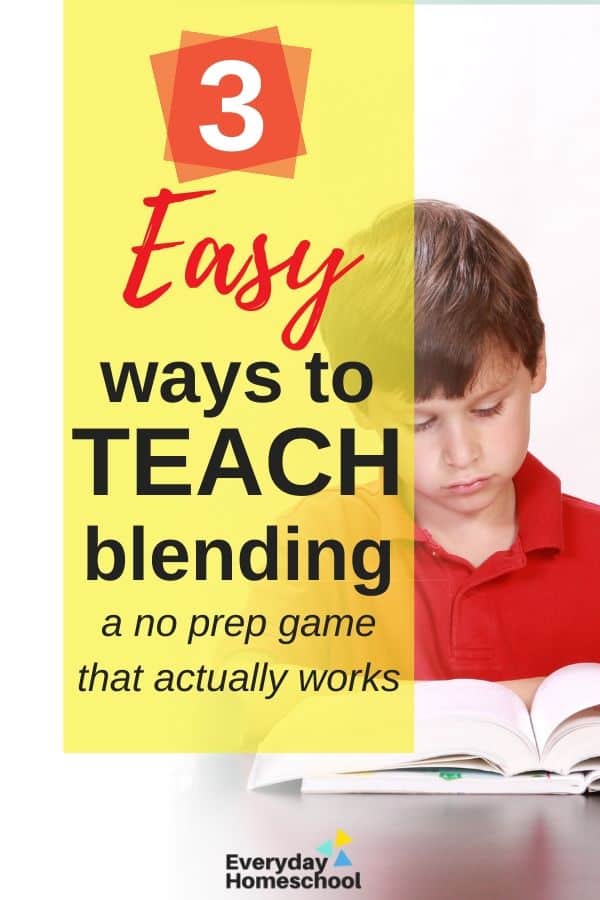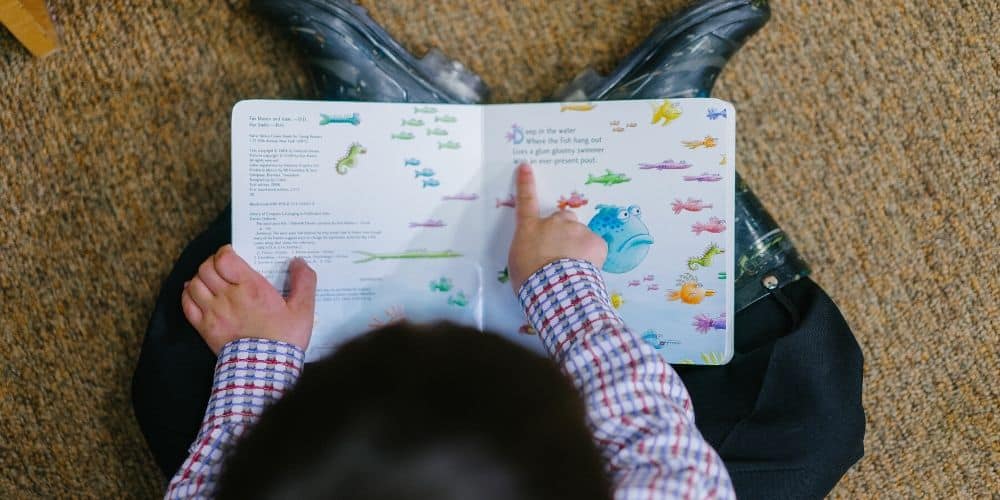Many parents teach their kids the letter sounds – C says /k/ as in cat. A says /a/ as in apple. T says /t/ as in top.
But then your child sees C-A-T and sounds it out /k/ big pause /aaaaa/ big pause /t/!!
Yay! they’re getting it!, you think. But then for some reason the child can’t hear the sounds all glued together to form the word: cat.
Enter blending. Auditory blending practice in particular.
This is short & sweet. You don’t to cut, paste, or prep anything. You don’t need to buy any supplies.
Just play the game. I call it “slow-fast” with the kids.
How it Works
The idea behind this slow-fast blending game is to give the child practice hearing blended sounds. You begin with words that are very easy to hear and gradually move through the phases listed below.
Use your judgement about how long to stay on each phase based on how easy it seems for the child.
Depending on the age of your child, this game could go on and on or not. If you are teaching a 6 year old to read, he may think it’s fun to do a few words from each phase a few days a week until it becomes so easy that it’s boring.
If you are playing with a 3 year old as a precursor to learning to read, she will likely want to play it over and over and over. Stick to phase 1 and 2 for this age, and don’t worry about how often you play it. You could play it occasionally during snack time. Or, after you read a book, play it by choosing words from the book.
The entire game is explained below. Or you can watch this video explanation:
Introduce the Slow-Fast Game
Say, “We’re going to play a game called slow-fast. I am going to say something very slowly, and then I want you to say it fast to see if you can figure out what word I’m saying.”
The first example you use should be something obvious: gold fish.
You say each syllable of the word and pause afterwards. Then say, “say it fast!” and the child says the complete word. Your kiddo might even beat you to it!
Say each part of “gold fish” normally, with a big space between the words. Then move on to a few other compound words as described below.
Phase 1: Obvious Compound Words
Say each part of the word normally, but leave a big space between the 2 words that make up the compound word.
Say to the child: “I’ll say it slow, you say it fast: door bell. You say it fast.” [Doorbell!]
Encourage the child: “Great job! That was too easy. I’m going to try to trick you! Fire man. Say it fast!” [Fireman!]
Your child will likely feel very proud when they can guess a word that you said was tricky.
Phase 1 Challenge: Once the child finds it easy to hear the compound words you can slow down and stretch out each word like this: aaaaaairrrrr pllllllaaaaaannnnnnne. (Airplane)
Make sure you continue to use the “say it slow – say it fast” language throughout the duration of the game.
Here is a list of compound words your young child will be likely to know or have a pretty easy time hearing. Choose words you think they know. Click here or on the image below to download the compound words list.

Phase 2: Single Words Familiar to the Child
The first step of this phase is to say the words almost as if they are compound words – at a normal pace, but with a big space in the middle. I like to start with family members’ names.
- Ad die Addie
- Em ma Emma
- El liot Elliot
- Lu cas Lucas
The second step is to say the word that is familiar to the child slowly and drawn out.
- Mmmmoooommmmyyyy Mommy
- Llllaaaannnnnieeeee Lanie
- Grrrraaaaannnnndmmmaa Grandma
Choose anything the child will find fun – favorite characters, TV shows, toys, family members, activities s/he enjoys, etc.
- Choooooo choooooossssss Choo-choos
- Paaaarrrrrrrrk Park
- Paaaawwww Paaaatrrrrrooollll Paw Patrol!
Phase 3: Random 1-Syllable Words
This phase gets us as close to the actual process that early readers will go through.
The end goal is for the child, when he sees a word like cat, to elongate sounds whenever possible and keep them all connected.
Often, early readers will say the sounds individually:
/c/ /a/ /t/
Then, they think about what they said and realize – it’s the word cat!!
It may not be THAT hard to hear that those 3 sounds form the word cat, but it will be much harder when the new-to-them word is: deliberately.
The slow-fast blending method equips new readers with a tool that helps them sound out long, unfamiliar words. Oh, and this is actually the same tool you probably subconsciously use when you see a long, unfamiliar word, such as pseudopseudohypoparathyroidism. (That happens to be the second longest english word, and it is a disease.) You see the word, visually break it down and sound out the phonograms and syllables slowly, and then hear how it should fit together if you were pronouncing it quickly.
How to Play Phase 3 of Slow-Fast Blending:
Pick short, random words and say them very drawn out:
Example 1: Mmmoooooommmmm mom
In the word mom, you can draw out all 3 sounds – the first and last /m/ sounds and the short /o/ sound.
Example 2: Caaaaaaaaat cat
In the word cat, you cannot draw out the hard /c/ sound at the beginning of the word or the /t/ sound at the end of the word. You can only draw out the short /a/ sound.
You can really do phase 3 with any words you want! Just do a few each day, gradually increasing the difficulty of the words.
Final Tips for the Slow-Fast Game
Don’t overplay this game. Rather, play it here and there. If it’s easy for your child, play with a few words from each phase.
If it’s more challenging, play phase 1 a few days, then phase 2, then phase 3. You don’t need to do it every single day or be regimented about it.
When I teach this game to my 3.5-4.5 year olds, we start out with phase 1 over the course of a couple weeks. Then I move to phase 2 and eventually phase 3. It can be played here and there over the course of a couple months.
It’s meant to be a short, fun, and quick introductory game that will quickly help your child learn to hear the long, drawn out word and blend it into a word.
This skill will be immensely helpful once your child knows their letter sounds and is ready to put them together to form words. Here is the next step to teaching your child to read: learning phonograms slowly & successfully!
By playing slow-fast AND teaching phonograms separately, you are laying a strong foundation for reading success when your child is ready to try it.
Good luck & have fun!
p.s. Not sure if your child is ready to read!? Check out this reading readiness guide for parents.
How to teach reading with phonograms
Our #1 best selling phonogram card, game, & activity kit!



